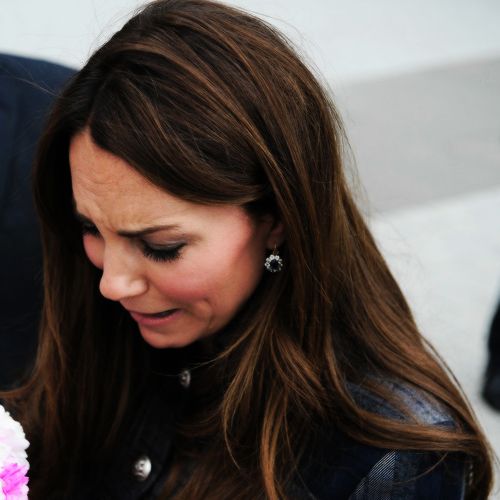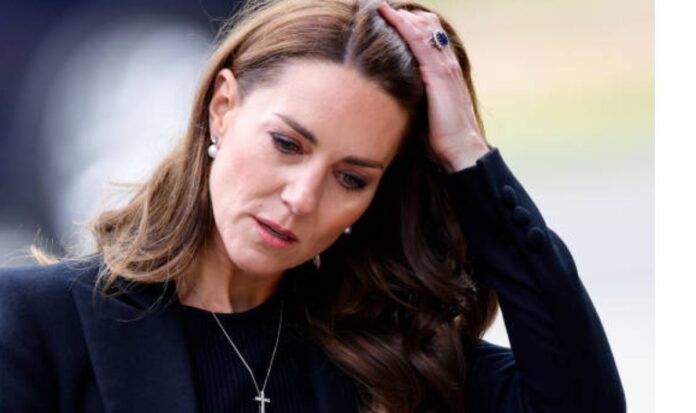Princess Kate’s cancer diagnosis shocks the world. Doctors reveal insights into her prognosis and treatment in this in-depth post. Kate Cancer, Princess Kate Cancer.
Princess Kate shows her strength in her cancer battle.
Catherine, the Princess of Ribs, says she is going through safeguard chemotherapy after malignant growth was found following stomach a medical procedure recently. The previous Princess Kate Middleton reported the news in a video message delivered Friday.
Expression of her findings followed a very long time of hypothesis about the 42-year-old princess’ wellbeing — a hypothesis that possibly developed when a doctored picture of Kate and her youngsters was delivered by Kensington Royal residence recently.
“I am well,” Kate said in the video. “I am getting stronger every day by focusing on the things that will help me heal.”
Also Read This: How to Use Chia Seeds for Weight Loss
Do we know what type of cancer Kate has?
Princess Kate Cancer Update – March 2024
Princess Kate didn’t determine what sort of malignant growth she was determined to have. She said she was going through safeguard chemotherapy under the guidance of her clinical group.

“It has been an unbelievably extreme two or three months for our whole family, yet I’ve had a fabulous clinical group who’ve taken extraordinary consideration of me,” she said in the video, which castle authorities said was recorded Wednesday.
“In January, I went through significant stomach a medical procedure in London, and at the time it was believed that my condition was non-malignant,” she proceeded. “The medical procedure was fruitful. Be that as it may, tests after the activity found the disease had been available. My clinical group hence exhorted that I ought to go through a course of deterrent chemotherapy, and I’m currently in the beginning phases of that treatment.”
CBS News boss clinical journalist Dr. Jon LaPook said it seemed like her disease was viewed as ahead of schedule.
“You generally need to track down the disease in the earliest stages,” LaPook said. “They went in there to do anything method they planned to do, and they realized it would have been some drawn out recuperation, and in there, probably when they had the option to look closely, they saw no proof of malignant growth. What’s more, it was just subsequently, when I surmise there perhaps was an assessment of an example, a careful example, that they said, ‘Gracious, there’s some disease here.'”
He added, “Since you generally need to find disease in the earliest stages, anything that sort of malignant growth it is, to me that was a somewhat decent piece of information.”
What is preventative chemotherapy and how does it work?
Dr. Shivan Sivakumar, an academic partner in oncology at the College of Birmingham, told The Related Press it’s muddled what the princess implied by “precaution” chemotherapy, however, he assumed that it is known as “adjuvant” chemotherapy in the clinical calling.
“This is chemotherapy after an activity to forestall repeat,” he said. “This is to endeavor to annihilate any circling disease cells.”
LaPook said “precaution” chemotherapy normally implies therapy “forestalling development of minuscule disease cells.”
Deterrent chemotherapy can make side impacts, including making somebody tired, LaPook noted. Opposite secondary effects might incorporate queasiness, shivering in the hands and feet, and once in a while balding, Dr. Monica Avila of Moffitt Malignant Growth Community in Tampa, Florida, told the AP, adding that there are drugs to assist with tending to aftereffects.
“A patient can take any place from half a month to a little while to recuperate from those impacts,” Avila said.
LaPook said he talked with a disease master from NYU Langone Wellbeing, where he is a teacher of medication, who shared an uplifting perspective on the possibilities for treatment.
“He said, definitely, it very well may be an unpleasant three months or somewhere in the vicinity, for instance, however at that point individuals will generally have 100 percent recuperation a short time later as far as restoring their solidarity and getting once again capability,” LaPook shared.
What else do we know about Princess Kate’s cancer diagnosis?
Kate didn’t share extra insights concerning her condition, asking the general population for “time, space and security” as she centers around her treatment and recuperation. She additionally talked about the difficulties of imparting this news to her three small kids.
“This came as a tremendous shock, and William and I have been giving our very best to process and deal with this secretly for our young family,” Princess Kate said in the video message. “As you can envision, this has taken time. It has required me investment to recuperate from significant medical procedures to begin my therapy. In any case, in particular, it has required us to invest to make sense of everything for George, Charlotte, and Louis in a way that is suitable for them, and to console them that I will be alright.”
Kate’s news comes not long after her father by marriage, Lord Charles, declared in February that he would go through therapy for an undefined type of disease which was found as he was being treated for a broadened prostate. Charles’ significant other, Sovereign Camilla, said he is “doing incredibly well the situation being what it is.”
Lord Charles said in an explanation Friday that he is “so glad for Catherine for her boldness in talking as she did,” and said he had stayed in the “nearest contact with his darling girl in regulation over the last weeks.”
What type of cancer has Princess Kate got?
In recent headlines, the world was startled by news surrounding Princess Kate’s health. Rumors swirled, questions arose, and concerns spread like wildfire. Amidst the speculation, one burning question remained
The Initial Revelation
The revelation of Princess Kate’s battle with cancer sent shockwaves across the globe. It was a moment that no one anticipated, yet it swiftly became a reality. In an official statement released by Buckingham Palace, it was confirmed that the Duchess of Cambridge had been diagnosed with a rare form of cancer.
Identifying the Type: Understanding Princess Kate’s Cancer
The specifics of Princess Kate’s diagnosis were initially shrouded in mystery, leading to widespread speculation and curiosity. However, subsequent reports shed light on the type of cancer she is facing.
Princess Kate has been diagnosed with a rare form of cancer known as Renal Cell Carcinoma (RCC). This type of cancer originates in the kidneys and accounts for approximately 90% of all kidney cancers. RCC typically develops in the lining of small tubes within the kidneys, known as renal tubules.
The Impact of Renal Cell Carcinoma
Renal Cell Carcinoma poses significant challenges due to its potential to metastasize to other organs, including the lungs, liver, and bones. The symptoms of RCC can vary widely and may include blood in the urine, persistent pain in the side or lower back, unexplained weight loss, and fatigue.
Given the nature of RCC, prompt diagnosis and treatment are essential. Early detection can significantly improve prognosis and increase the likelihood of successful treatment outcomes.
What does Harry think of Kate’s cancer?
The Royal Response: Harry’s Thoughts on Kate’s Cancer
In the wake of Princess Kate’s diagnosis, the royal family rallied around her with unwavering support. Prince Harry, known for his close bond with his sister-in-law, expressed his thoughts on Kate’s cancer diagnosis in a heartfelt statement.
“Kate is a pillar of strength, and her resilience in the face of this challenge is truly inspiring,” Prince Harry remarked. “We are standing by her side every step of the way, offering our love, support, and encouragement.”
Prince Harry’s words underscored the solidarity and unity within the royal family during this difficult time. His sentiments echoed those of millions worldwide, who expressed their well-wishes and prayers for Princess Kate’s swift recovery.
When Did Kate Start Chemo?
Following her diagnosis, Princess Kate wasted no time in initiating treatment to combat her cancer. She commenced chemotherapy shortly after receiving her diagnosis, embarking on a rigorous treatment regimen aimed at halting the progression of the disease and restoring her health.
The decision to undergo chemotherapy was made after careful consideration and consultation with a team of medical experts. Princess Kate’s proactive approach to her treatment reflects her determination to confront her diagnosis head-on and emerge victorious in her battle against cancer.
Additional Resources:







